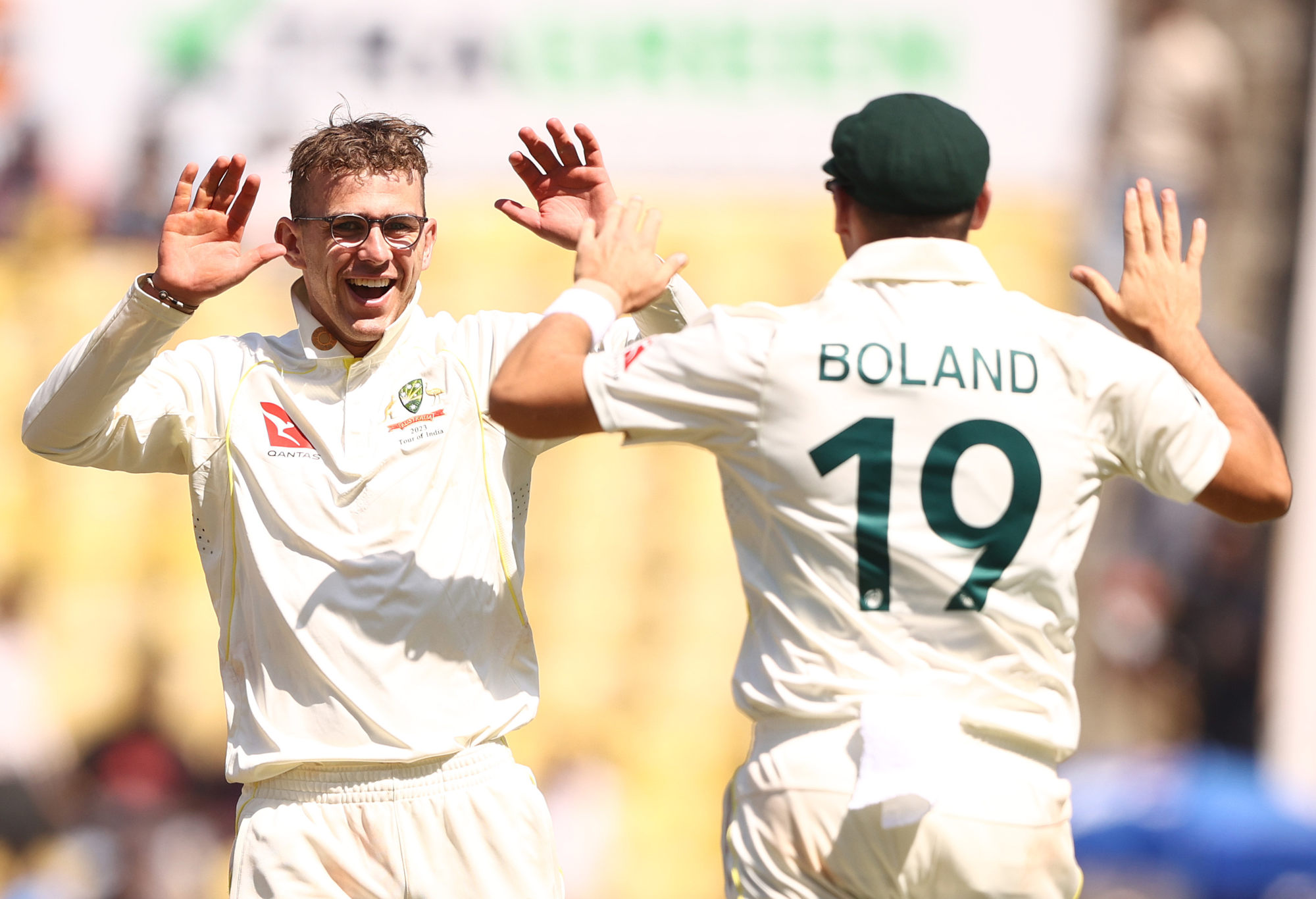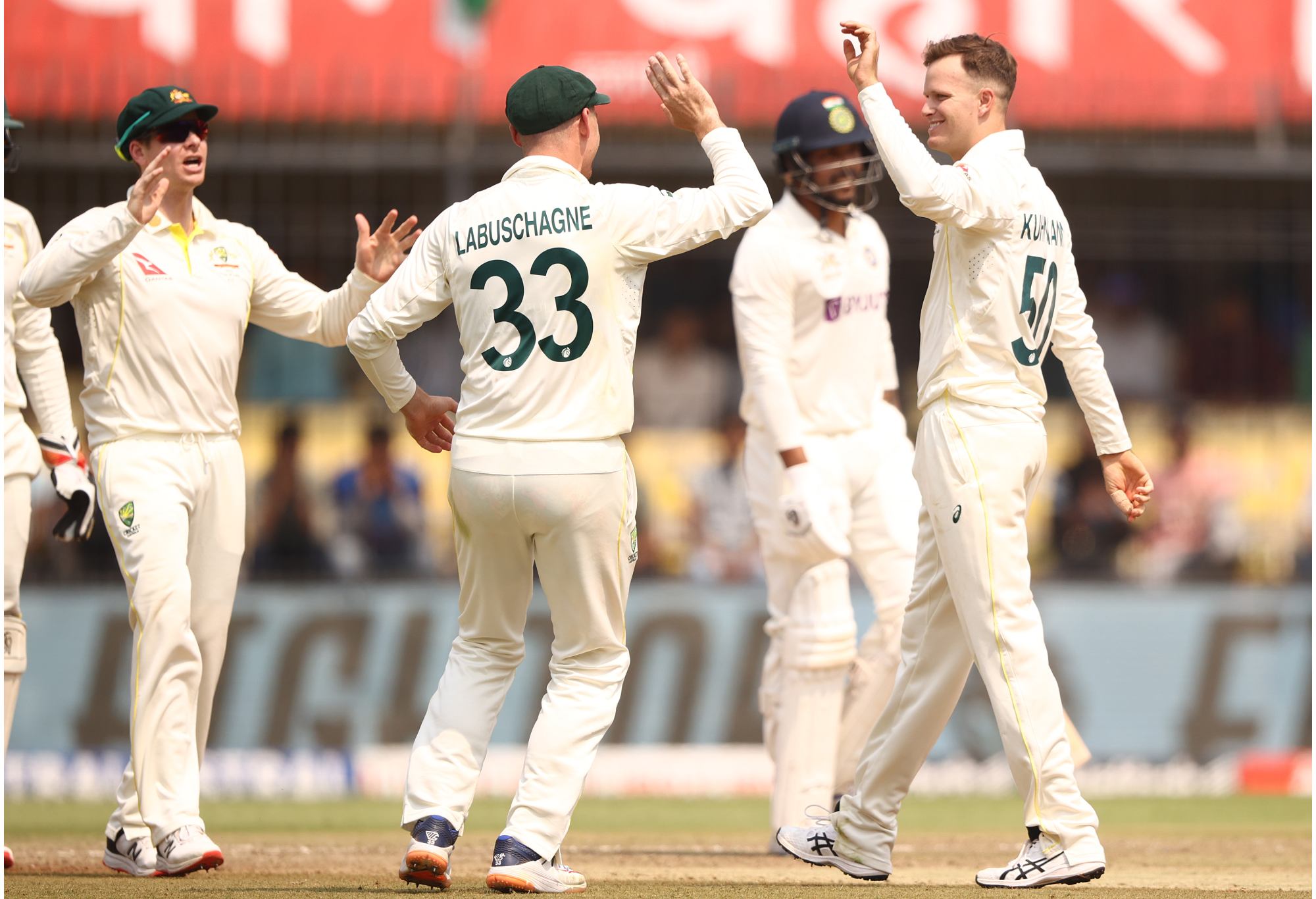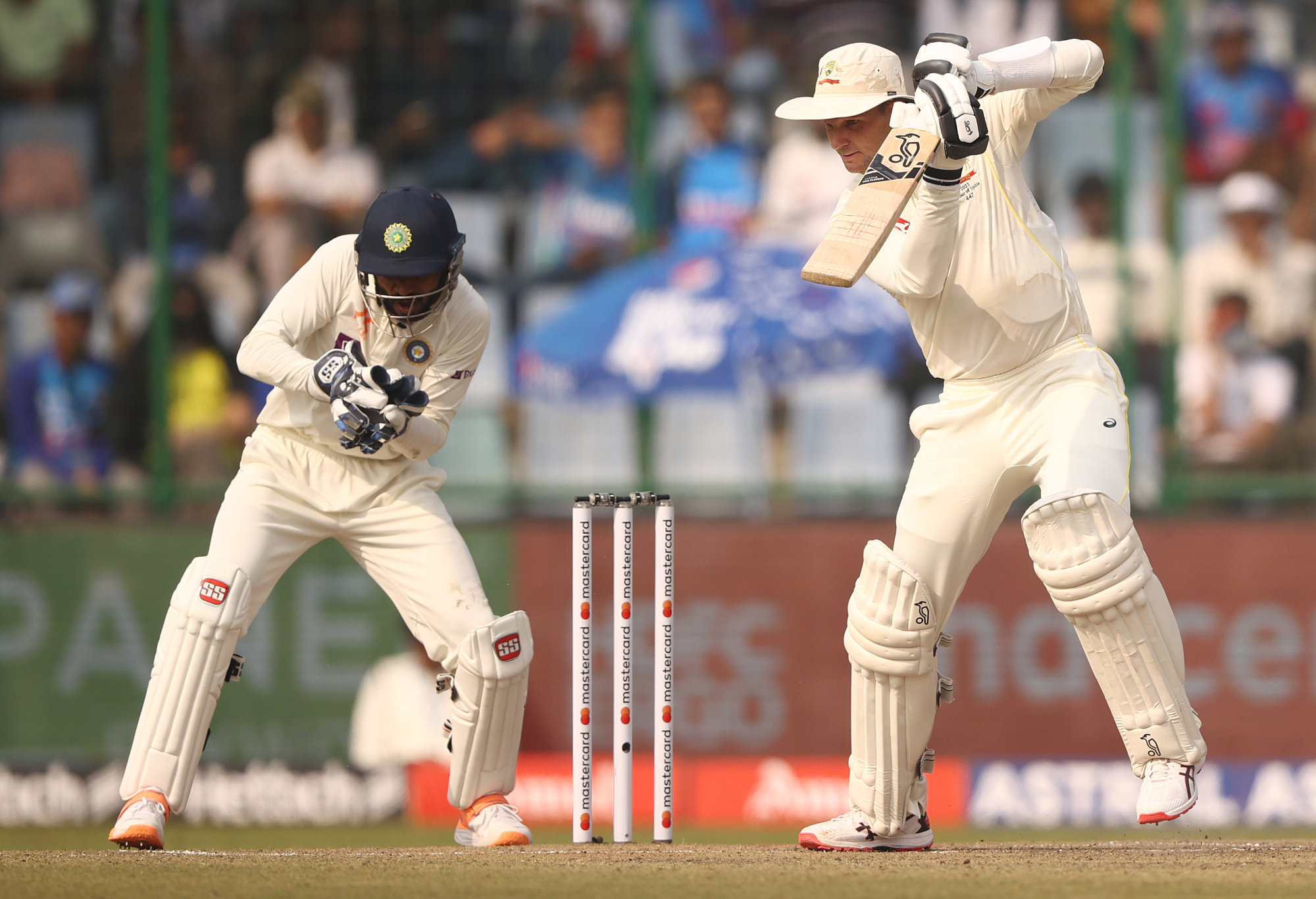Australia might have succumbed to a fourth consecutive series defeat to India 2-1, but all things considered, it was a tour which could have gone a lot, lot worse.
After starting with a diabolical innings defeat in the first Test in Nagpur, the visitors improved with every passing Test, throwing away a winning position with an hour of batting madness in the second Test in Delhi to go 2-0 down, recording a famous nine-wicket win in hostile conditions in Indore, and finally squaring a batting-dominated series finale in Ahmedabad.
Along the way, two promising young spin bowlers in Todd Murphy and Matt Kuhnemann were blooded with encouraging results, Travis Head defied the selectors’ shock call to omit him from the first Test XI with a excellent series as makeshift opener, and Steve Smith once again proved he remains an astute captain should he ever be needed to deputise for Pat Cummins, who returned home mid-tour due to a family tragedy.
Here are The Roar’s player ratings for all 15 Australians to appear in the 2023 Border-Gavaskar Trophy
Usman Khawaja – 9
4 Tests, 333 runs at 47.57, HS 180, 1×100, 2×50
There have been series where Khawaja has averaged more in his late-career renaissance, but this tour – notwithstanding any Ashes heroics later this year – will likely go down as his crowning jewel when he decides to finally pull up stumps.
Comfortably Australia’s most assured batter throughout the series, the 36-year old played like a man out to prove a point after years of scepticism over his ability to play spin. After a pair of classy half-centuries in the second and third Tests, his breakthrough century in Ahmedabad was a performance worthy of any of this country’s finest with the willow.
Khawaja finished as the highest-scoring batter in a bowler-dominated series, and perhaps only a leg injury sustained fielding in the fourth day prevented him from filling his boots further on the final day of the series, and getting that average up past 50.
Travis Head – 8.5
4 Tests, 235 runs at 47, HS 90, 0x100, 1×50
Head’s stunning axing from the first Test team felt like a mistake at the time, and only looks even more disastrous with the benefit of hindsight.
The South Australian’s recovery from there to finish only behind Khawaja in the averages for Australia was already remarkable enough, without him being given the added challenge of opening the batting after David Warner sustained a series-ending fractured elbow in Delhi.
From then on, Head made every post a winner, with his attacking strokeplay giving the Aussies a strong start in four of the five innings he opened. After a pair of near misses in Delhi and Indore, he finally broke through on the last day in Ahmedabad for a maiden half-century for the tour, only to fall just 10 short of a richly deserved ton.

Travis Head bats during day three. (Photo by Robert Cianflone/Getty Images)
Nathan Lyon – 8
4 Tests, 22 wickets at 22.36, BBI 8/64, 2x 5-wicket innings, 1x 10-wicket match
Lyon’s efforts in India are all the more remarkable when you consider that 21 of his wickets were taken in the final three Tests of the series, after his spot in the team had been questioned for the first time in years thanks to his first Test 1/126 in which he was comfortably outbowled by debutant Todd Murphy.
After that disappointing start, though, it didn’t take long for the GOAT to find his radar. He claimed five first-innings wickets in Delhi to put Australia in the driver’s seat, including the scalps of Rohit Sharma, KL Rahul and Cheteshwar Pujara within 10 balls, and it wasn’t his fault the team couldn’t capitalise on his performance.
Better was to follow in Indore: making the most of bowler-friendly conditions, he finished with an equal career-best eigh-wicket haul in the second innings (after three in the first, including the ball of the series to castle Pujara), and single-handedly made sure Australia didn’t throw away another winning position.
Australia’s spin-bowling depth is now deeper than it has been since the days of Shane Warne and Stuart MacGill, but it’s as clear as ever Lyon remains the pick of the bunch.
Todd Murphy – 8.5
4 Tests, 14 wickets at 25.21, BBI 7/124, 1x 5-wicket innings
With just seven first-class matches under his belt, the bespectacled Victorian was handed a shock baggy green cap for the first Test in Indore… and promptly bowled his way to a seven-wicket haul in his first innings, making Nathan Lyon look thoroughly second-rate in the process.
The Aussies’ one shining light out of a disastrous innings defeat, Murphy wouldn’t quite hit those heights for the rest of the series, but continued to impress with his accuracy and dependability, with his economy rate of 2.56 runs per over only shaded by Axar Patel among the series’ regular bowlers.
After looking a genuine bunny in the first three Tests of the series, he hit a nice 41 in Ahmedabad, too, though that was probably more of a sign of that pitch’s lifelessness than any improvement he made with the bat.
At just 22 years old, Murphy has now established himself as Lyon’s heir apparent as the country’s leading off-spinner: he may, however, have to wait a few more years before getting a run in more pacer-friendly conditions.

Todd Murphy celebrates taking the wicket of Virat Kohli. (Photo by Robert Cianflone/Getty Images)
Cameron Green – 7
2 Tests, 135 runs at 67.5, HS 114, 1×100, 0x50; 0 wickets
After a two and a half-year wait, the Australian all-rounder finally got the century monkey off his back, bringing up his maiden ton in Ahmedabad to herald the next step in the future superstar’s development.
It was an innings that showed just how crucial his injury-enforced absence for the first two Tests of the series was; his aggressive hitting, particularly his sumptuous cover drives, made him a far more difficult middle-order prospect than the man he replaced (more on him later).
No one was expecting miracles with his bowling after such a long lay-off, and despite being given the new ball in each of the Tests he played, the Western Australian looked exceptionally rusty, leaking runs throughout at more than five per over and failing to even look like taking a wicket.
Matt Kuhnemann – 7
3 Tests, 9 wickets at 31.11, BBI 5/16, 1x 5-wicket innings
From being overlooked in the original Test squad to opening the bowling in a matter of days – Kuhnemann’s rise to a baggy green cap was about as rapid as it gets.
Chosen ahead of Ashton Agar once Australia’s selectors felt they needed a left-arm spinner with more penetration than the Western Australian, Kuhnemann was more than serviceable in his first three Tests, removing Rohit Sharma and Virat Kohli twice apiece for the series.
His crowning jewel was, clearly, his spectacular five-wicket haul to help roll India for 109 in the first innings in Indore; removing both openers Sharma and Shubman Gill within two overs, he started the rolling stone that ended with Australia’s only win of the series – and nabbed himself his best ever first-class figures too!

Matthew Kuhnemann celebrates taking the wicket of Umesh Yadav. (Photo by Robert Cianflone/Getty Images)
Marnus Labuschagne – 6.5
4 Tests, 244 runs at 40.67, HS 63*, 0x100, 1×50
The number one-ranked batter in Test cricket, Labuschagne’s series average of above 40, impressive-looking given the hostile batting conditions on display, should be taken with a grain of salt.
Outside a nerveless unbeaten 28 to help steer Australia home in Indore, and a boots-filling half-century on Day 5 in Ahmedabad, Labuschagne never quite mastered Ravichandran Ashwin and Ravindra Jadeja. Regularly trapped on the crease, a mistake many first-time India tourers make, the Aussie star still looked a cut above most his teammates, but was decidedly short of his ridiculous run tallies in more favourable climes.
Bizarrely, having been selected for his Test debut back in 2018 as much for his handy leg-breaks as his batting, the Queenslander sent down just five overs for the series, all in the first Test, and didn’t get so much as a look in as Australia toiled for 179 overs in Ahmedabad.
Peter Handscomb – 6
4 Tests, 145 runs at 29, HS 72*, 0x100, 1×50
Recalled to the Test team after a four-year stint in the wilderness due to his reputation as an excellent player of spin, Handscomb didn’t produce anything earth-shattering, but was a solid member of the middle order all series long.
Unlike just about everyone else in the team, Handscomb’s best efforts probably came in Australia’s two defeats. With 31 and 16 in Nagpur, he was just about the pick of the batters in a ghastly innings loss; while his masterful unbeaten 72 got Australia off to a bright start in Delhi, and he was one of the few batters to get a genuinely good ball in the second innings instead of throwing his wicket away.
Excellent in the field, especially at short leg, throughout the series, Handscomb’s bullseye direct hit from the deep to run Umesh Yadav out in Ahmedabad was impressive enough on its own, never mind that it came after 176 overs under the baking sun.

Peter Handscomb of Australia bats. (Photo by Robert Cianflone/Getty Images)
Steve Smith – 6
4 Tests, 145 runs at 29, HS 38, 0x100, 0x50
Smith racked up three centuries to single-handedly keep Australia alive in their last tour of India, but it’s fair to say he fell a long way short of repeating the dose this time around.
This was a frustrating series for the Aussie champion; four times out of seven for the series he made it into double figures, but with a high score of 38, it marked a rare tour without a single 50+ score for Smith.
The pick of the visitors in Nagpur with scores of 37 and 25 not out, he, like Handscomb, found the going tougher the longer the series went.
He gets bonus points, though, for his impeccable captaincy in the final two Tests, with his field placing on the first morning in Indore as big a factor in Australia’s win as Matt Kuhnemann’s five-for in the same innings.
Alex Carey – 5
4 Tests, 56 runs at 9.33, HS 36, 0x100, 0x50; 4 catches, 2 stumpings
Carey’s wicketkeeping has been improving steadily since his Test debut in late 2021, and he has never been better than on this tour.
Seldom making a mistake in treacherous conditions, the South Australian’s glovework was immaculate throughout, making him comfortably the best keeper of the series ahead of India’s KS Bharat, a player renowned for his excellence keeping up to the spinners.
However, while he gets full marks for his keeping, his batting was on the opposite end of the spectrum. Carey was the poster boy for Australia’s reckless approach across the first two Tests; his penchant for sweeping was ruthlessly exposed by Jadeja and Ashwin, and his inability to find another reliable shot with which to make runs effectively rendered him useless following a freewheeling 36 in his very first hit of the series.
Carey’s excellent 12 months have earned him enough credits in the bank to ride out one poor series with the bat, especially while his glovework is immaculate; but similarly dire returns in England for the Ashes could see pressure mount on his spot in the team, especially with Josh Inglis looming large as a back-up.
Pat Cummins – 3.5
2 Tests, 3 wickets at 39.66, BBI 2/78
For a multitude of reasons, Cummins’ most daunting assignment as captain will be one he wants to never have to relive.
On a personal note, he departed India mid-tour to spend precious time with mother Maria, who passed away on the eve of the fourth Test after a long battle with cancer, a decision thankfully applauded by everyone, from pundits to fans to teammates.
On the field, his bowling was understandably far from its menacing best in foreign conditions; with just three wickets across the first two Tests, plus one of his worst ever spells with the new ball on the first evening of the first Test, saw him relinquish the number one spot on the ICC’s bowling rankings to Ravichandran Ashwin, the first time in four years he hasn’t been at the top.
Few pace bowlers in recent years have found success in India; you can fully expect Cummins to come close to retaking that gong once the Ashes are complete later this year.
Mitchell Starc – 3
2 Tests, 2 wickets at 66, BBI 1/14
Like Green, Starc looked well and truly underdone after making his Test return mid-series, having missed the first two matches due to his Boxing Day Test finger injury.
Aside from a remarkable first over of the third Test in which he should have had Rohit Sharma twice but for a pair of non-reviews, the left-armer was handled comfortably by the Indian batters, in particular Shubman Gill.
Hardly needed in the third Test as the spinners did the bulk of the work, the junk time wicket of a slogging Axar Patel was his only breakthrough on a lifeless Ahmedabad pitch, and if anything the 22 overs of toil he endured will do his match fitness good ahead of an action-packed rest of the year.
David Warner – 1
1.5 Tests, 26 runs at 8.67, HS 15
Is this the end for David Warner? If it is indeed curtains for the veteran opener, a ghastly series is a sad conclusion to the career of one of Australia’s most dynamic batters.
Warner’s patchy form in the home summer never boded well ahead of a tour to a country where he has struggled in two previous tours; on spinner’s paradise wickets, to fall twice out of three innings to pace bowling was alarming.
His highest score of 15, incidentally, was the worst innings of the bunch; looking all at sea, Warner scratched around for 44 balls, sustained a concussion and a fractured elbow from a pair of blows, and finally snicked off to Mohammed Shami coming around the wicket in a dismissal that will have Stuart Broad licking his lips.
Warner averages 21.72 as an opener from 10 Tests in India – the second-lowest average of any opener with at least 10 innings in the country. In the form he showed on this tour, picking him for the World Test Championship final or the Ashes to follow – both in England, where his career stats are just as bad as in India – would surely just lead to further humiliation.
Matt Renshaw – 0.5
1.5 Tests, 4 runs at 1.33, HS 2
The one thing keeping Warner in the Test frame at this point might be the fact that his heir apparent as Australian opener, Matt Renshaw, somehow endured a tour that was even more embarrassing.
Picked ahead of Head for the first Test, and then replacing Warner as a concussion sub for the second, the Queenslander was completely at sea against Ashwin and Jadeja, unable to make head or tail of the turning ball and managing to face just 16 balls for the series – three of which dismissed him.
An opener by trade who was treated incredibly harshly to be plugged into the middle order and expected to perform, Renshaw’s series from hell, coupled with Cameron Bancroft’s incredible Sheffield Shield form, might see him leapfrogged by the time the World Test Championship final rolls around in June should selectors have finally seen enough of Warner.
Not rated (only one Test): Scott Boland (0 wickets).
































































































